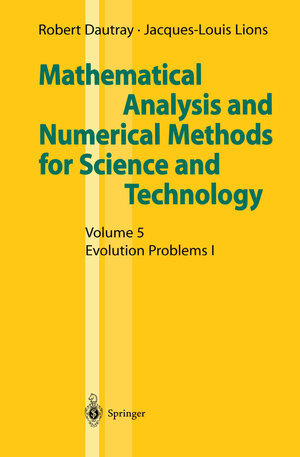
×
![Buchcover ISBN 9783642580901]()
Mathematical Analysis and Numerical Methods for Science and Technology
Volume 5 Evolution Problems I
von Robert Dautray und Jacques-Louis Lions, aus dem Französischen übersetzt von A. Craig299 G(t), and to obtain the corresponding properties of its Laplace transform (called the resolvent of - A) R(p) = (A + pl)-l , whose existence is linked with the spectrum of A. The functional space framework used will be, for simplicity, a Banach space(3). To summarise, we wish to extend definition (2) for bounded operators A, i. e. G(t) = exp( - tA) , to unbounded operators A over X, where X is now a Banach space. Plan of the Chapter We shall see in this chapter that this enterprise is possible, that it gives us in addition to what is demanded above, some supplementary information in a number of areas: - a new 'explicit' expression of the solution; - the regularity of the solution taking into account some conditions on the given data (u , u1, f etc ... ) with the notion of a strong solution; o - asymptotic properties of the solutions. In order to treat these problems we go through the following stages: in § 1, we shall study the principal properties of operators of semigroups {G(t)} acting in the space X, particularly the existence of an upper exponential bound (in t) of the norm of G(t). In §2, we shall study the functions u E X for which t --+ G(t)u is differentiable.



